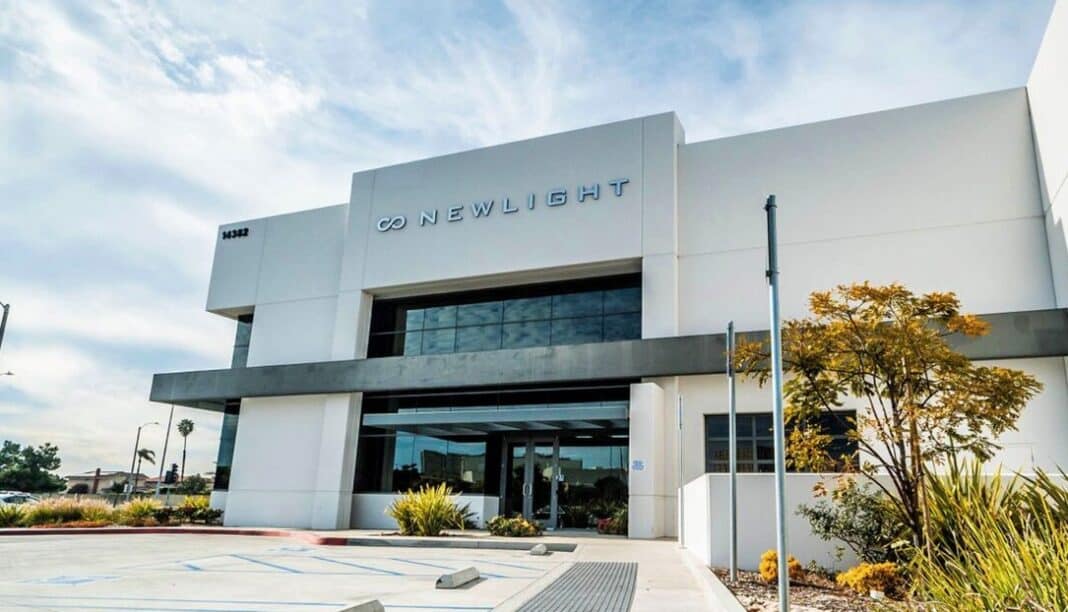California-based Newlight, which brings a new biological pathway to making plastics, closed a $125 million equity round led by GenZero.
Newlight aims to help mitigate climate change by turning greenhouse gas into a resource. By mimicking nature’s way, Newlight uses microbes to turn captured carbon, air, and methane into degradable, high-performance biomaterials called AirCarbon®.
AirCarbon is a biomaterial used to decarbonize heavy plastic-consuming industries such as foodware and fashion.
GenZero led the funding round, with participation from Oxy Low Carbon Ventures (OLCV), a subsidiary of Occidental (Oxy), and Charter Next Generation (CNG).
GenZero is an investment platform company owned by Temasek seeking to ramp up global decarbonization efforts and deliver positive and scalable climate solutions.
Expressing their gratitude for achieving this great milestone, Newlight CEO Mark Herrema noted that:
“This capital round represents an inflection point for Newlight, where we have the opportunity to build on 20 years of research, development, and commercialization, and expand biological decarbonization at large scale.”
Harnessing The Power of Nature
Alongside global warming, the world is also dealing with the growing piles of plastic waste, with hundreds of million tons produced yearly. Each of these environmental issues needs specific solutions to address. But with Newlight’s technology, both problems can be resolved at once.
There are three ways to turn CO2 into plastics: electrochemistry, thermocatalysis, and biological. Newlight is harnessing the last pathway or nature’s way to biologically convert greenhouse gas into polymers using microbes found in the oceans.
These microorganisms eat greenhouse gas to grow a molecule inside their cells called PHB (polyhydroxybutyrate). This molecule is found in most life on Earth and is used by living organisms like leaves as a biological energy and carbon storage vehicle.
PHB is meltable and moldable once purified, making it ideal for delivering various material functions. AirCarbon leverages all the natural and high-performing qualities of PHB.
By weight, AirCarbon is about 40% oxygen and 60% carbon.
Synthetic plastic is hard to deal with as it doesn’t go away since it doesn’t occur naturally in the environment. AirCarbon is different; because it’s natural, nature knows how to deal with it.

When made using renewable energy, the process of producing AirCarbon is carbon-negative. That means it captures or destroys more carbon dioxide or its equivalent than it emits.
- AirCarbon footprint: -87.76 kg CO2e/kg as certified by Carbon Trust.
After decades of research, Newlight made advances in technology design, purification, and material performance in their pilot plant Eagle 3. It’s the world’s first commercial-scale operation harnessing the power of nature to suck in carbon and make it into a resource.
This enables the company to melt AirCarbon and use it to make everything from fiber and sheets to solid parts. The resulting products can replace things like synthetic plastic and animal leather.
Carbon Negative Materials for Net Zero
Today, Newlight delivers its AirCarbon-based materials to more than 5,000 locations worldwide. Their customers and partners include the food service, hotel, fashion, and automotive industries. Since foodware like straws and cutlery represents the majority of plastics polluting the oceans, Newlight focuses on making Restore foodware.
 The other key application of AirCarbon is in fashion under their Covalent brand with the following sample products.
The other key application of AirCarbon is in fashion under their Covalent brand with the following sample products.
 The $125M capital investment will enable Newlight to expand its AirCarbon production to create carbon-negative materials at a global scale. It will significantly scale up production at its existing California facility and a new facility under construction in Ohio.
The $125M capital investment will enable Newlight to expand its AirCarbon production to create carbon-negative materials at a global scale. It will significantly scale up production at its existing California facility and a new facility under construction in Ohio.
Apart from financial support, Newlight has also agreed with CNG to commercialize specialty films made from AirCarbon. It also inked a deal with OLCV to use the latter’s Direct Air Capture (DAC) systems for AirCarbon production plants.
OLCV leads the construction of Stratos, the world’s largest DAC plant in Texas, while also developing sequestration hubs throughout the Gulf Coast region. The goal is to deliver large-scale and rapid carbon removal solutions to help tackle the climate crisis.
DAC provides innovative opportunities to supply carbon as a raw material to make carbon-negative products.
Both GenZero and OLCV find Newlight’s technology significant in meeting the demand for carbon-negative materials and accelerating the path to net zero emissions.
AirCarbon is now used to develop and make products for various industries, with the aim to turn everyday products into a consumer-driven effort to reduce carbon emissions.
According to Herrema, their mission is to “provide companies with a measurable and scalable path to help them decarbonize their products and move closer to a net zero world”.
Newlight’s innovative approach to turning carbon into biomaterials is a significant milestone in tackling both climate change and plastic waste. The $125 million investment will enable Newlight to scale up its carbon-negative materials production globally.

